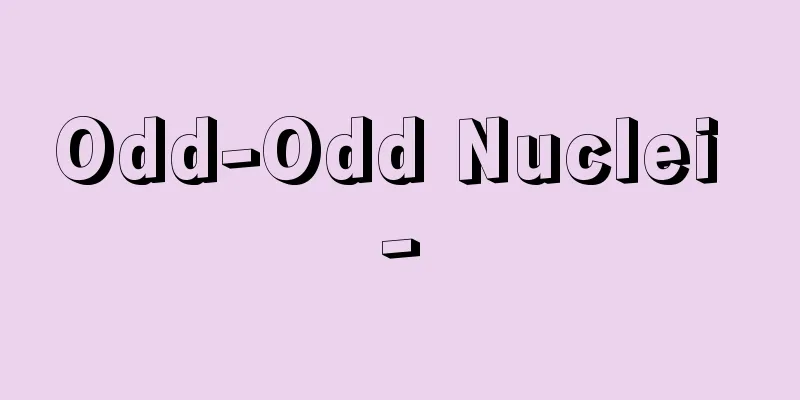Dwarf - dwarf

|
(1) Dwarfism. Medically, it refers to an abnormally small body, especially height. Dwarfism refers to a height that is three or more standard deviations shorter than the average. In addition to constitutional causes (such as pygmies), many cases are caused by endocrine disorders, bone diseases, and are hereditary. Causes include malnutrition in childhood, kidney disease, and congenital heart disease. Pituitary dwarfism is caused by a lack of growth hormone in the anterior pituitary gland, and is accompanied by a childlike facial appearance and genital hypoplasia, but the intelligence is normal. A case caused by a lack of thyroid hormone is called cretinism. In primary ovarian deficiency (Turner syndrome), there are no abnormalities other than the appearance of dwarfism, but the sex chromosome X is missing. In precocious dwarfism, the epiphyseal plate closure is early due to abnormally increased secretion of sex hormones, and the patient is small in height. Down syndrome is also accompanied by growth disorders. Bone diseases that cause dwarfism include chondrodystrophy and rickets. The former has a normal torso, short limbs, normal wrist and ankle bones, and a unique shape. Treatment is given to dwarfs with a clear cause, but it is not very effective for those who have passed the growth stage or have intellectual disabilities. (2) A very small being who appears in folklore and myths from all over the world, and who often has supernatural abilities. Also called a dwarf. It can be a divine being, an image of a different race, or a belief that a spirit or soul takes this form. In Europe, fairies, Japan, and other "little children" such as Issun-boshi and Momotaro, all of these are generally negative aspects of being "small," but they are associated with another world or special abilities, and serve to reaffirm the everyday life of a "normal size." Dwarfs as clowns in courts and circuses are also based on this view of dwarfs. →Giant→Related topics Oberon | Cassin-Beck disease Source : Heibonsha Encyclopedia About MyPedia Information |
|
(1)小人症。医学的には身体,特に身長の異常に小さい場合をいう。小人症は平均身長より標準偏差にして3以上小さい場合をいい,体質性のもの(ピグミーなど)のほか,内分泌異常や骨疾患によるもの,遺伝性のものが多く,幼児期の栄養失調,腎疾患,先天性心臓病なども原因となる。脳下垂体性小人症は脳下垂体前葉の成長ホルモン欠乏によるもので,小児様顔貌(がんぼう),性器発育不全を伴うが知能は正常である。甲状腺ホルモンの不足によるものは,クレチン病という。原発性卵巣形成不全(ターナー症候群)では,外見上の小人症以外の異常を認めないが,性染色体Xが欠けている。性早熟性小人症は性ホルモンの異常分泌亢進により骨端線閉鎖が早く,身長は小さい。またダウン症候群も発育障害を伴う。小人症の原因となる骨疾患には,軟骨異栄養症とくる病がある。前者は胴は普通で四肢が短く,手関節,足関節骨は正常で,特異の形態を示す。原因の明らかな小人症には,その治療を行うが,発育期を過ぎたもの,知能障害に対する効果は少ない。(2)世界各地の民間伝承,神話などに登場する,体が非常に小さく,しばしば超自然的な能力をもった存在。侏儒(しゅじゅ)ともいう。神的存在であったり,異民族のイメージであったり,精霊や霊魂がその形をとると信じられていたり,さまざまである。ヨーロッパの妖精や日本の一寸法師,桃太郎などの〈小さ子〉など,いずれも〈小さい〉という一般的には負の部分を,別世界や特殊な能力と結びつけ,日常的な〈ふつうのサイズ〉の生活を再確認するための役割を担わされているといえる。宮廷やサーカスにおける道化としての小人も,こうした小人観を前提としている。→巨人 →関連項目オベロン|カシン=ベック病 出典 株式会社平凡社百科事典マイペディアについて 情報 |
Recommend
Lipatti, D.
...Many of his works are based on folk songs, and...
Toledo (English spelling) Toledo, Alejandro
Born March 28, 1946. Cabana, Peruvian politician a...
Household rice price method
...Types 1 to 5 were classified according to plac...
Azuma Nishikie
...A general term for multi-colored ukiyo-e woodb...
Learner model
...(1) Problem-solving ability: Since intelligent...
rainbow runner
…The back of the body is indigo blue, the abdomen...
Law of the Sea
A general term for the rules of international law ...
Kameyama Castle Town
...The remains of the castle tower stone wall and...
Hasegawa School
This is a school of painting founded by Hasegawa T...
Raphus cucullatus (English spelling) Raphuscucullatus
...They feed on fruit, berries, seeds and other v...
Inca civilization - Inca civilization
A civilization that flourished in the Andes region...
island area
…England and Wales were divided into 52 geographi...
Navplion (English spelling)
…The Greek peninsula is located in the south of t...
Mitoya [town] - Mitoya
An old town in Iishi District, eastern Shimane Pre...
Sakichi Kineya
Nagauta shamisen player. The head of the Kinesa s...








![Hagiwara [town] - Hagiwara](/upload/images/67cc812aa145e.webp)
